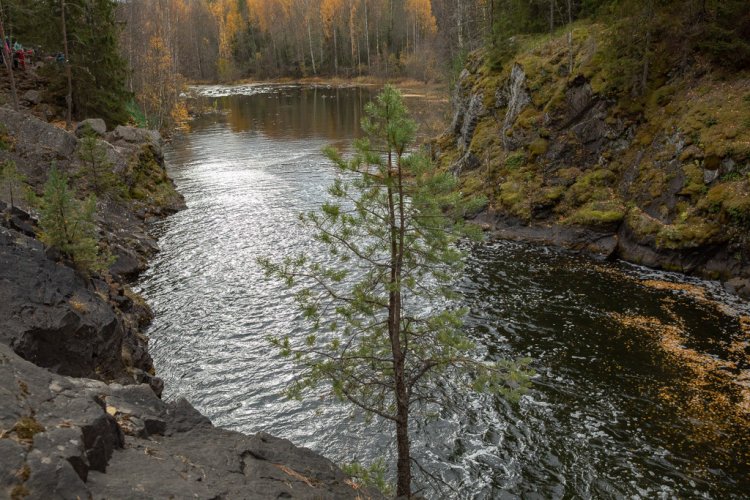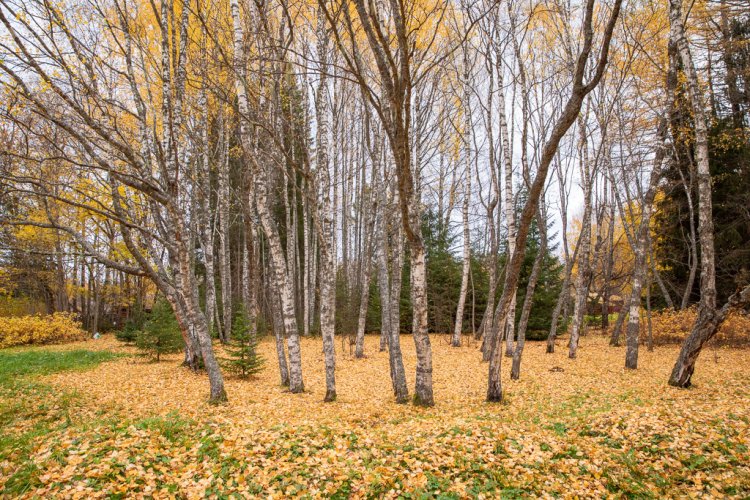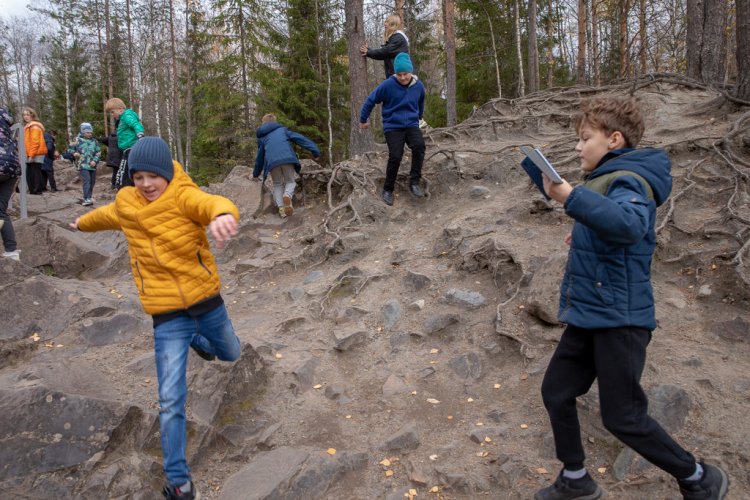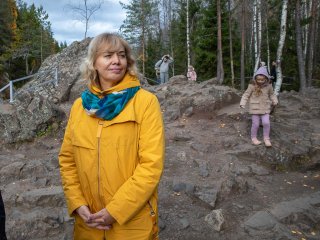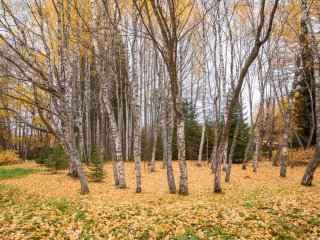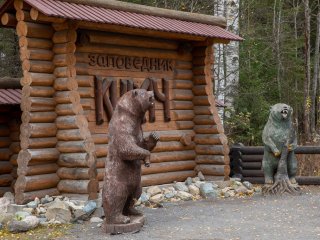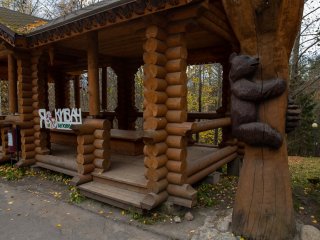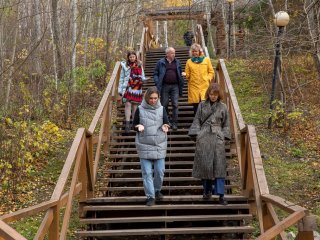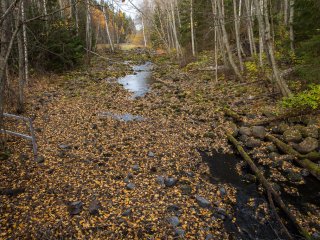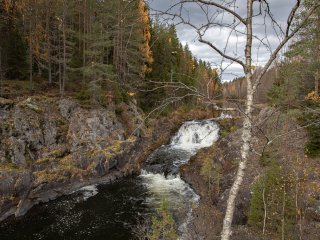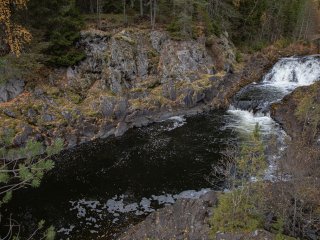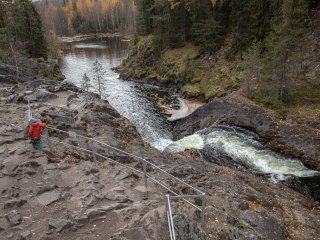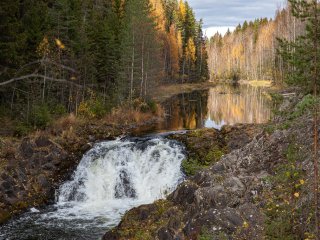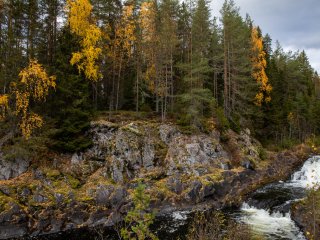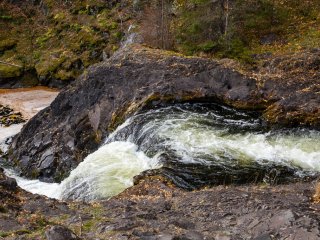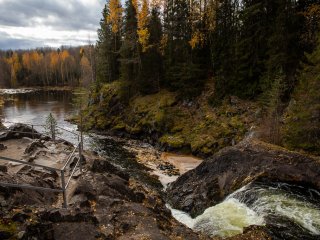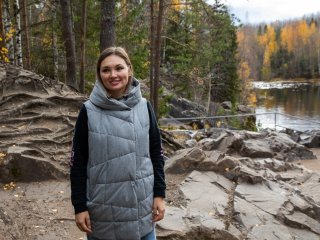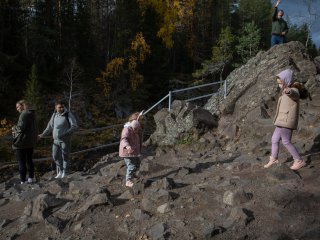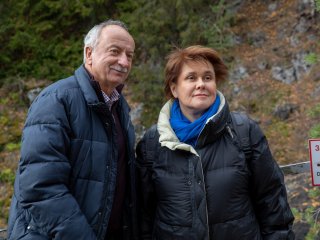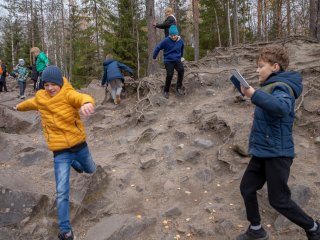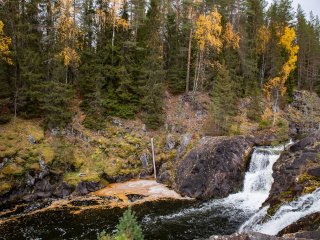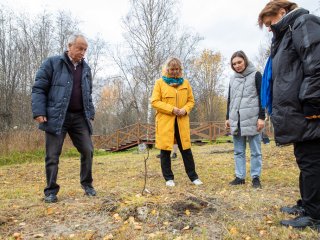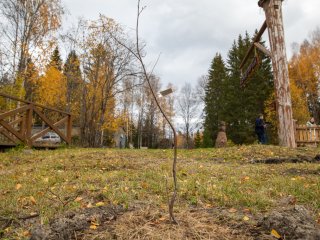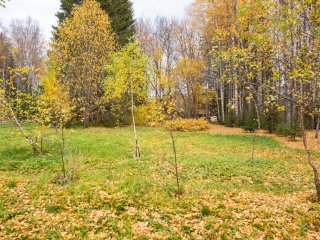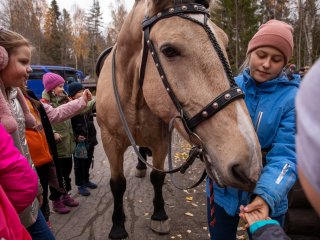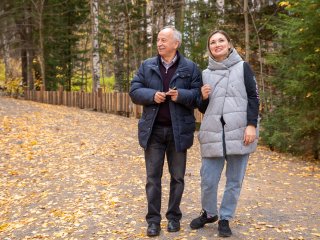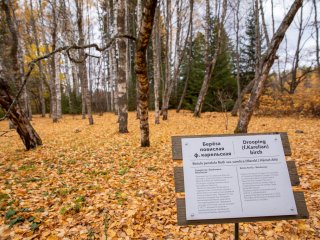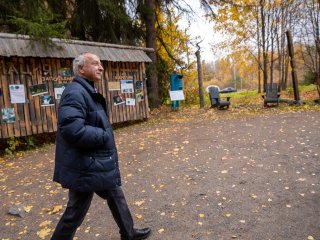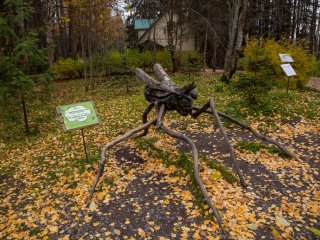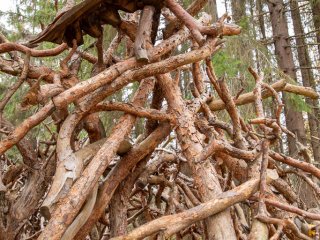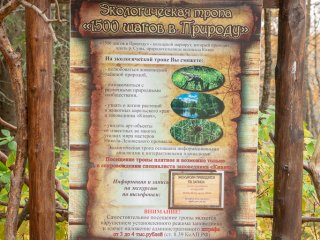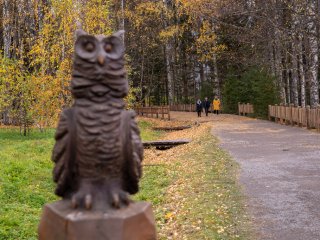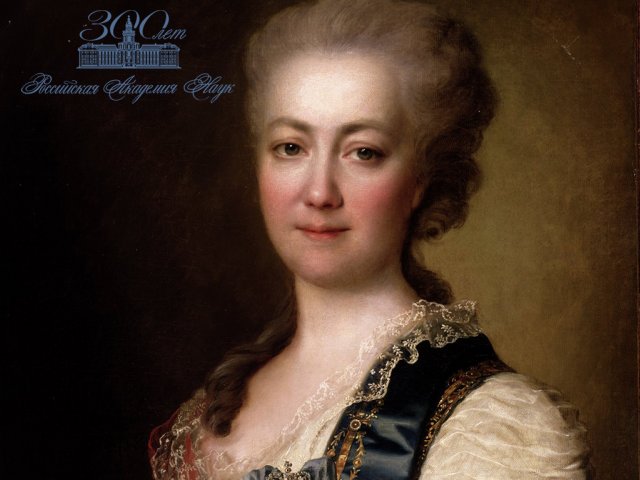Karelia in Miniature. Scientific Russia Visited the Unique Kivach Nature Reserve. Photo: Nikolay Mokhnachev / Scientific Russia
Scientific Russia goes on with its series of articles dedicated to Karelia’s unique natural riches and science development in the region. Today, we are going to talk about the Kivach Nature Reserve and its cooperation with the Karelian Research Center of the Russian Academy of Sciences (KRC RAS).
There are two versions about the origin of the word “kivach”: it could be derived either from “kivi,” which stands for “stone” in Finnish, or “kiwas,” meaning “snowy mountain” in Karelian. Both variants embody the major landmark of the nature reserve, the same-name Kivach Falls, in the best way possible.
The snow-white roiling falls surrounded by boulders are famous far beyond the borders of Russia. Kivach is one of the most famous natural landmarks in Karelia and Europe’s largest plain falls by area second only to the Rhine Falls. Such large falls in plain stretches of Europe’s rivers are considered uncommon. The total height of the Kivach Falls from the upper to the lower water surface is 10.7 meters, while the water discharge was as high as 460m3/s in some years. These falls are considered among the most powerful plain falls in Europe.
“The mother of the Kivach Falls is the Suna River, which began to flow through this area and made its bed here, having found the stone stairs, eight thousand years ago. Europe’s plain falls number one are the Rhine Falls in the north of Switzerland. But our Kivach Falls have always been second largest by water volume and discharge. The Suna River level has become much lower lately and its water discharge decreased 14 times. This is largely due to the fact that the Kondopoga hydropower plant was built in the 1930s near the city of Kondopoga, which also has a paper mill. So, a part of water from the Suna River was diverted there,” Olga Yefimova, a resource specialist of the Department of Environmental Education at the Kivach Nature Reserve, said.
The territory around the falls is forever unavailable for economic use and this above all is to preserve the taiga. Photo: Nikolay Mokhnachev / Scientific Russia
The Kivach Nature Reserve is often named “Karelia in miniature,” as it has most diverse landscapes, a richest variety of plants and animals and unique soils. In order to classify them all, the nature reserve invited experts from all over Russia and foreign countries, but scientists have not reached common ground on such an extraordinary find.
“The Kivach Nature Reserve is famous for its unique soils being formed over argillaceous deposits under special natural conditions ─ the so-called eluvial superficially gleyed soils. Here, we arranged tours for the Russian soil scientists, spent a lot of time on the edge of the open cut and debated how to classify this soil, where it belonged? Eventually, experts said: “We never met any such soils before, therefore, it probably makes sense having a separate classification unit for these soils.” We also invited foreign scientists to visit the nature reserve. Petrozavodsk recently hosted the international conference, titled “Soil Classification.” So, we had experts coming to our nature reserve from all over the world and we showed them this landmark and asked for their opinion. They said exactly the same thing that the Russian scientists did: “This is an absolutely unique landmark, so you’d better come up with the name for it.” And this is what we are actually doing right now: we have to make up and establish scientifically, describe this new type of soils,” Olga Bakhmet, Corresponding Member of the Russian Academy of Sciences, Director General of the Karelian Research Center of the Russian Academy of Sciences, said.
Director General of the Karelian Research Center of the Russian Academy of Sciences O.N. Bakhmet on the unique soils of Karelia and the Kivach Nature Reserve
The Kivach Nature Reserve is rich in unique soils and trees. Of course, it is the famous Karelian birch (Betula pendula var. carelica) with its one-of-a-kind patterned structure. With the design reminding of marble, its wood is considered to be the most decorative in the north and is very expensive. The nature of the unique patterned structure has not been determined yet, nor do experts have one opinion how the Karelian birch reproduces or know its entire genome. And it is these questions that scientists of the Karelian Research Center of the Russian Academy of Sciences are looking to answer.
Scientists came up with the idea of reproducing the Karelian birch in 1931 when the Kivach Nature Reserve was established. Photo: Nikolay Mokhnachev / Scientific Russia
In 2021, employees of the nature reserve and scientists put in a lot of effort and planted out 30 new transplants of the Karelian birch at their arboretum. All visitors of the nature reserve can enjoy seeing unique trees under tactful guidance of specialists, of course. The nature reserve pays much attention to environmental and public awareness activities. The Kivach employees want to convey to people the main idea of the reserve management and studies, which is wildlife conservation. The nature reserve hosts various environmental and public awareness activities for different age groups: preschoolers, school and university students, and adults. Disabled individuals are not neglected either.
The Kivach Nature Reserve has over 150,000 visitors annually. Photo: Nikolay Mokhnachev / Scientific Russia
The Kivach Nature Reserve and the Karelian Research Center of the Russian Academy of Sciences have been partners for many decades. Unsurprisingly, the nature reserve was established as a division of the Karelian Research Center.
The nature reserve was founded in 1931 by Karelian scientists for scientific, experimental, commercial, cultural and educational purposes. The choice of the place comes from the history itself: the unique falls, which gave the name to the nature reserve, have been a very appealing tourist attraction for several centuries. The nature reserve was closed during the Great Patriotic War. Kivach became the state nature reserve in 1965.
The Kivach Nature Reserve cannot exist without the Karelian Research Center of the Russian Academy of Sciences, which, in turn, cannot imagine any research in many scientific areas without the reserve. Kivach is an excellent location for different academic pursuits. It offers vast opportunities for the study of plants, animals, soils and not only. In partnership with scientists of the Karelian Research Center, we have been repopulating the lake salmon and freshwater (European) pearl mussel since the early 2000s. The efforts are fruitful and the species are repopulated. The salmon comes back for spawning,” Olga Yefimova says.
With the total area of 11,000 ha, the Kivach Nature Reserve is famous not only for its Karelian birch, but also for its mighty pine trees, which are 200 years old and more. It is truly a marvel that you can find Karelia’s virgin flora and fauna only 80 km of Petrozavodsk. It has taiga forests and purest forest lakes, peat bogs and cataracted rivers, springs and, of course, falls. The nature reserve accounts for 41 mammalian species, 217 bird species and 26 fish species. Kivach also has unstudied invertebrate animals.
Once you come to the nature reserve, you will immediately hear the chant of birds. There are many rare species here. At Kivach, you can find such red-listed birds, as golden eagle, peregrine falcon, tundra swan, red-throated loon, white-tailed eagle, etc.
To preserve and enrich Karelia’s natural riches is the goal for Karelian scientists for decades to come. In further stories, we will tell you about the Girvas Volcano, Karelian petroglyphs ─ the UNESCO world heritage sites ─ and many more. Stay tuned!
Olga Yefimova, a resource specialist of the Department of Environmental Education, tells about the Kivach Nature Reserve

